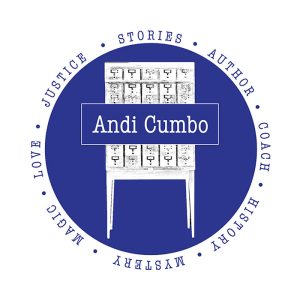Growing up in the Deep South, I had a profound sense of exile. That exile cam because of what I saw as historical erasure on the landscape, in the history books, in the erecting of monuments – all those places that are there to remind and tell us about the past, and about who we are. But of course, these monuments and things are never simply about the past. They are about who we are now, and what we think about ourselves right now. — Natasha Tretheway
As I read this quote today in The Writer’s Chronicle, I found myself doing that head nodding that involuntarily comes upon a person when she hears the truth. 
Sometimes as I write, I see a page of cream paper beneath my hand. On it there are the faintest traces of an image – a man with a worn, wide-brimmed hat leaning against a stick. I can just barely see him in the threads of the paper. An outline but not much else.
As the words come from my hands – as I try to fill in the who and what that made up Primus’s life – the image becomes darker. My hand sketches in the lines on his face and the way the sun hits the rough-sewn shirt he wears. Soon, I can see the worn leather of his shoes and the soft wrinkles in the corners of his eyes. Then, the background comes in. He’s standing at the corner of the dairy. It must be the end of the day when the light sets everything golden. He is looking out toward the low grounds, and now, I can see the shapes of people walking, their bodies slumped a bit the way a body will do after working physically all day. They are coming toward him, their foreman. He is waiting to greet each. This is the story I see.
So much of this history has been erased by intention, by apathy, by fear. So much is lost. If I can but sketch in corner of the story of one place, one group of people, well, then maybe we will all work to fill in the other erasures we know are there in the absences of our stories.
